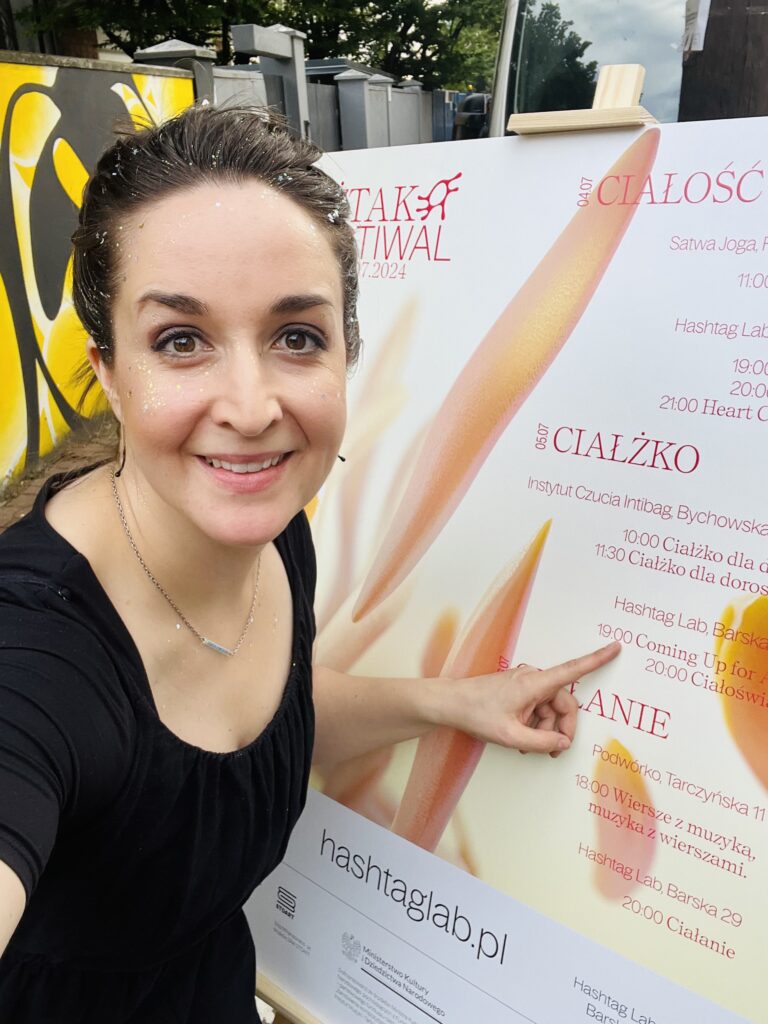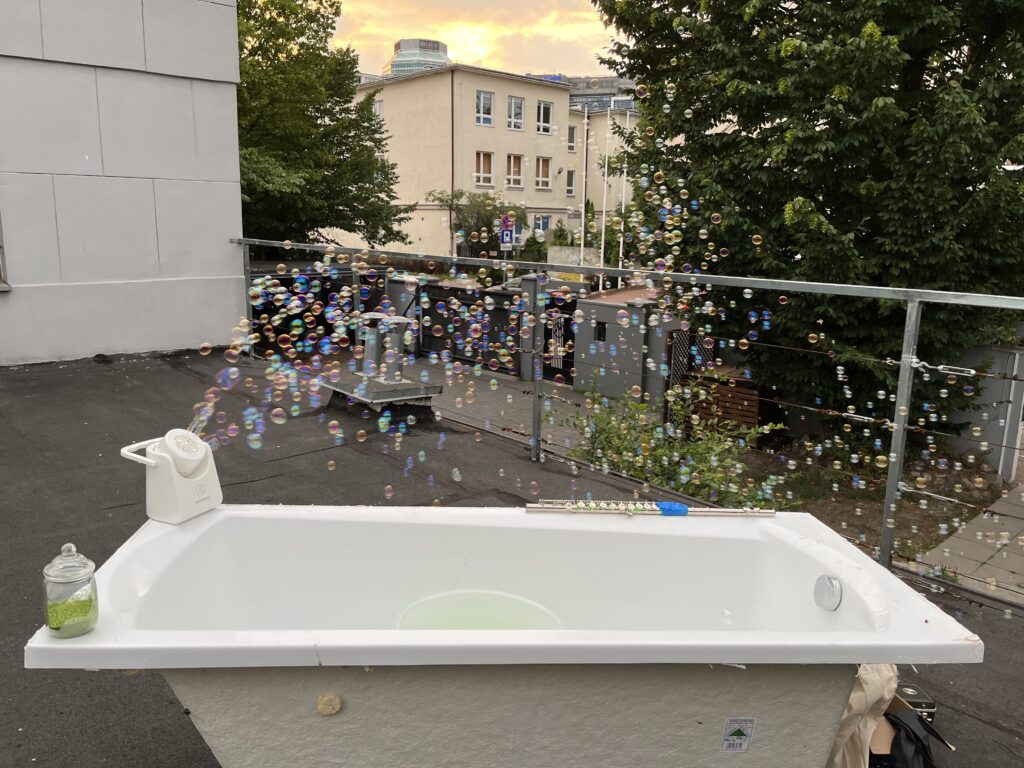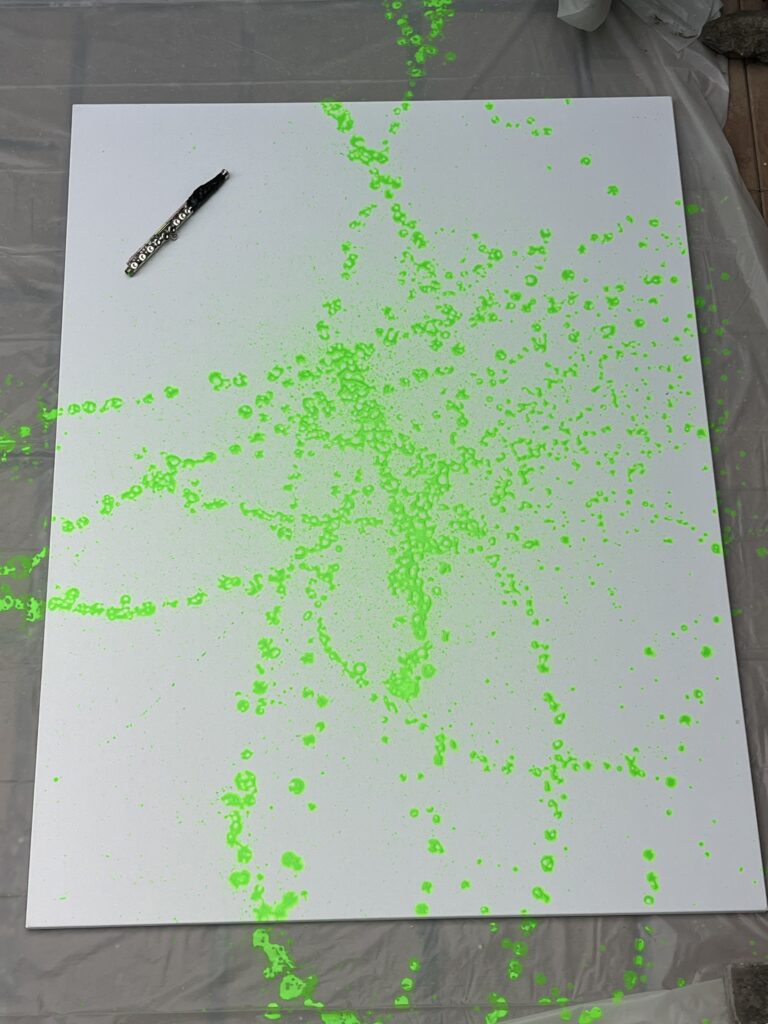Kathryn Williams and her breathtaking “Coming Up For Air” project
Kathryn Williams is a flautist and educator based in Manchester. A core member of The House of Bedlam, she has also performed with Distractfold Ensemble, Ensemble Voix Nouvelle, Ensemble 360, BBC Philharmonic, The Hallé, Sinfonia Cymru and Royal Liverpool Philharmonic, and has played concertos with Manchester Camerata, Dayton Philharmonic, and Royal Northern College of Music Symphony Orchestra and Wind Ensemble. Kathryn will make her concerto debut with the Luxembourg Philharmonic in November, premiering the Coming Up for Air Concerto by Larry Goves at Rainy Days Festival.
Thanks to her outstanding project “Coming Up For Air”, she became recognisable in the flute music scene, especially in the contemporary music field. The aim of the project is to expand the flute repertoire with compositions that can be performed in one breath. The project was initiated due to Kathryn’s health problems, and now it is also a kind of therapy for the performer herself, helping her cope with the disease.
At the invitation of Anna Karpowicz, the artist visited Poland at this year’s edition of the AżTak Festival.
Natalia Jarząbek: As a flutist, everybody has his/her own path. What’s your story? Why did you start to play the flute?
Kathryn Williams: My grandfather was a band director in Michigan, and he gave me my first flute lessons during the summer when I was around 10. I had a few lessons with him, and he helped me so much that when I went back to school with my flute, I was told I was ‘too advanced’ for the school band and to stop having lessons so that the others could catch up. Luckily, my parents didn’t take that advice and I kept having lessons! The flute was like my armour throughout those tricky teenage years, and in high school I was able to take online classes so I could practice as much as I wanted. I was offered a full scholarship to attend the Royal Northern College of Music in Manchester, England in 2007, and I’ve been in the UK ever since. I ended up getting a Bachelor’s, Master’s, International Diploma, and a PhD – so I’d say I’m quite qualified now.

How did you realise that you have a breathing problem and how it influenced your flute playing? What kind of disease was it?
I’ve had asthma and allergies since I was a child. The asthma went away for a long time, but a few years ago it suddenly returned, and I had a really scary bronchial spasm in the cold weather. Since then, I have been on inhalers and various medications, and I must be mindful of my environment. Things like tobacco smoke, wood smoke, perfume, pollen, grass, trees, fog machines, pet dander, and dust mites really set me off. I can’t even receive a bouquet of flowers.
I also suffered with obstructive turbinates which meant I couldn’t breathe through my nose, taste, or smell for a couple of years, and I had to have surgery to correct this. It made playing the flute very difficult and painful; it affected my hearing as well as a build-up of pressure with the flute, especially high notes. I had to learn to make compensations to find a decent sound, and various tricks to making phrasing sound convincing when I had to take many more breaths than other flutists needed. It was also illuminating how rarely it is that composers write empathetically for the flutists’ breath. I’m pleased that now at least 150-ish composers have had to think about it, and I hope they take the inspiration forward! It’s tough when a lot of my allergy triggers are commonplace in the environment. I recently had to delay attending an ensemble rehearsal because there had been a fog machine on in the venue. I wasn’t warned, but at the same time, I hadn’t thought to make a rider that specified I couldn’t work in a space with a fog machine. Another aspect of this project is drawing attention to the importance of advocating for my needs and making it known what I need to be able to breathe.
I read that you were in the hospital because your illness started to get out of control – am I right? Did they help you there? How? Did it help you for your breathing problems?
That’s right, I was hospitalized a couple of times during the worst of my illnesses. There was a domino effect of being badly affected by the damp housing I was in, my allergies and asthma being out of control, and the constant stress of being a single mother while undertaking my master’s degree and starting my professional career with my family in another country. I hit a crisis point where my body (and soul) had had enough.
I was helped to manage my medications and had tests to learn what specific environmental triggers make my breathing worse. Now at home we have air purifiers and often have the windows open to air out the house! Aside from maintaining medications, the things that have helped me have been creatively addressing breathing restrictions. I earned a qualification in pool free diving, and managed to hold my breath for over 3 minutes! I’d love to do more of it as it’s actually a very freeing process to let go and allow yourself those few minutes of total solitude (with proper safety protocols of course).
Do the pieces from the project help to maintain your good breathing condition?
Absolutely. They are a form of respiratory therapy for me. In fact, when I take my yearly asthma review, my exhalation duration is off the charts, and the nurses always look shocked! There are a few pieces that push me every time I play them, and I have to maintain a good breathing condition in order to perform them…. Lucy Hale’s When We Breathe is 2 minutes and 24 seconds long! So, I must take very small inhalations and suspend the time between them, then the same with the exhalation. It takes a huge amount of control to perform. I also have to be careful with how I curate my setlists, as after Lucy’s piece I need something a bit easier to recover!

I guess you cooperate with composers? How do you explain to them what’s the idea of one-breath piece? Do you suggest them some solutions or ideas?
Lots of different ways! Sometimes I simply receive a new piece through my website. I always send feedback and an informal recording, with some back-and-forth with every composer to ensure I understand their response to the brief. I deliver workshops at music schools and universities to composition students, where I explain the process in detail, share examples of different approaches to composing for the flute as well as various options for elongating the breath, and it’s great to have the chance to workshop their pieces in-person.
Sometimes, the one-breath pieces lead to longer-term collaborations and much larger co-composed pieces. For example, Annie Hui-Hsin Hsieh had the idea that I should try playing a high note on the piccolo for one breath while doing sit-ups! This initial experiment led to a 2-year collaboration on PIXERCISE: a 20-minute, high intensity interval training circuit while playing the piccolo, in which I had to train for over a year and consult with a personal trainer to specifically build strength in the muscles used for piccolo playing. The work premiered at Huddersfield Contemporary Music Festival and has also been performed in Antwerp, Manchester, London, and Snape Maltings. It goes to show that just one breath can lead to so much more!
Are you maybe composing too?
Yes, I enjoy getting a hand in the devising process, and I have been making my own works. I enjoy writing as co-composer with lovely duo partners Andy Ingamells, Ed Cooper, Annie Hui-Hsin Hsieh, and Jessica Aszodi.
Could you just tell a little bit about your own compositions? We know they’re really various. How many pieces did you compose? and in general: how many of them were composed for the project in total? I guess a lot!
I have co-composed quite a few pieces such as Vagus Correspondences with vocalist Jessica Aszodi; numerous works with composer-performer Andy Ingamells (we have a duo called Private Hire), and I’m currently working with composer-performer Bofan Ma on Coming Up for Air, which centres upon creating a performance-led, multi-sensory installation driven by live indoor air quality data, making sounds with the invisible particles constituting the air all around us: to question what and who is changing our air today.
I also end up collaborating with a lot of the composers who write single-breath flute pieces. I have made up a handful of my own single-breath compositions, and recently started properly identifying as a composer!
I know that you’re using a lot of interesting acoustic effects while performing, like special effects, could you tell a bit about this? And some other things, like playing in a swimming pool?
Indeed, there are many different things composers invite me to do, including: dipping the head joint in and out of a bowl of water while singing and playing, jumping while singing and playing, doing exercise while playing, making spooky sounds during inhalation, submerging my whole body in the swimming pool playing a plastic fife, exhale and sing paint out of my flute…
As you can imagine, I’m not using my concert Levit flute for this; I collect old, broken flutes for the messy pieces! Some pieces require their own instrument that cannot be used for any other works – so one day I’ll do a Coming Up for Air set where I switch instrument/object for every single piece!
Do you also use circular breathing in your project?
Absolutely not, that would be cheating! I find the circular breathing technique fascinating, of course, but the stipulation is very strict in my project that composers only have available the material of a single inhalation and exhalation!

Where do you work everyday?
I am freelance, so there isn’t a regular workplace, but for the moment I am enjoying a postdoctoral position at the Royal Northern College of Music in Manchester, and I go in around once a week. The project is an expansion of Coming Up for Air, focusing on indoor air quality (IAQ) data. I have partnered with composer/performer Bofan Ma and tech solutions company IoT Horizon, who have loaned us some incredibly high-tech IAQ sensors which send through numerous data points every second. Bofan and I are preparing for our first public installation of the project, which will react to live IAQ and have lots of public engagement such as holding up bowls of smelly chopped onions near the sensor or singing near the sensors and hearing the differences in data. We’re planning for the project to delve next into gathering data on how IAQ affects musicians’ health and wellbeing. I also have three children, two of them very young, so that’s also a full-time job!
Where in the world have you been with your project?
The farthest I’ve been with Coming Up for Air is Bendigo, Australia! I have also brought it to France, Norway, Belgium, the USA, and in many cities across the UK including London, Birmingham, Manchester, York, Leeds, Cambridge, and Poulton-le-Fylde. There were a few years of not being able to travel with it due to COVID-19, so I’m delighted to be travelling again now and bringing the project to Poland!
This week you are in Poland for the wonderful AżTak Festival (this years edition is focusing on the body and the influence of music to relax it more and to focus your mind on the right way). How do you introduce your project here? How did you like the festival, staying in Poland and everything here?
I was delighted to be invited by Ania to play at AżTak Festival! My project seems to connect perfectly to the themes of focusing on the body and mind… some of the pieces I’ll play are definitely not relaxing but they are humorous – they embrace the humanity of failure, resilience, and overcoming – and surely that’s also good for the mind.
The last question: because it’s already after the AżTak Festival – how was your visit here? Which pieces did you perform? What do you think about contemporary musical events and the audience in Poland?
I had a brilliant time in Warsaw. I found it a fascinating, moving, and sobering place to visit. I wish I had time to explore it more. It was sometimes tricky finding gluten-free food, but I managed ok, and Ania kindly supplied me with delicious snacks from the dedicated shop.
I was lucky to have a fantastic audience at the festival and the weather was perfect. I loved how the audience was so open to experiencing everything – many even climbed up the ladder to join me on the rooftop – and people were interested in viewing some of the scores and objects and chatting with me afterwards. I performed 29 pieces in my set. The full set list is on my website because there are probably too many to list here!
I performed in three locations: first, on the roof where I chose pieces that used water, paint, glitter, and were focused on performative actions rather than sound. Next, we went indoors, and I performed in front of the projector screen, displaying some of the scores at the same time. Then, I used the piece by Stephen Chase where I can jump up and down and leap across the room to get to the stage area, where I performed pieces that were heavily amplified and used tape parts.
There were three world premieres: Passive Living by Laila Arafah (her piece happened on the roof – directly after Ed Cooper’s piece where neon green paint was exhaled from my flute down onto a canvas on the ground below – whereby I slowly took the flute apart, let the paint drip out of it, and left each part of it in a different location), balalalloooonn by Samuel Loveless (a video score for inflating and deflating a single breath in a balloon), and finally Scherzo for Piccolo by 12-year-old Oskar Bałdyga. There was a beautiful synchronicity in Oskar’s piece, because it turned out that his mother used to live in Warsaw! Thank you for making me feel so welcome, and I hope to come back soon.

